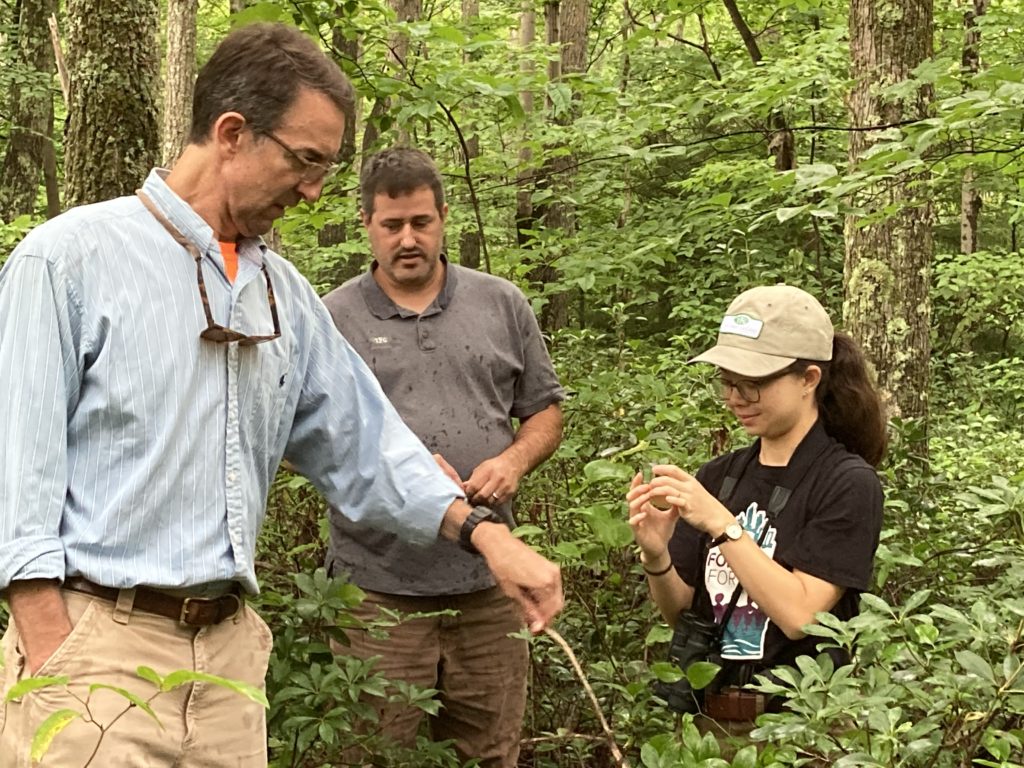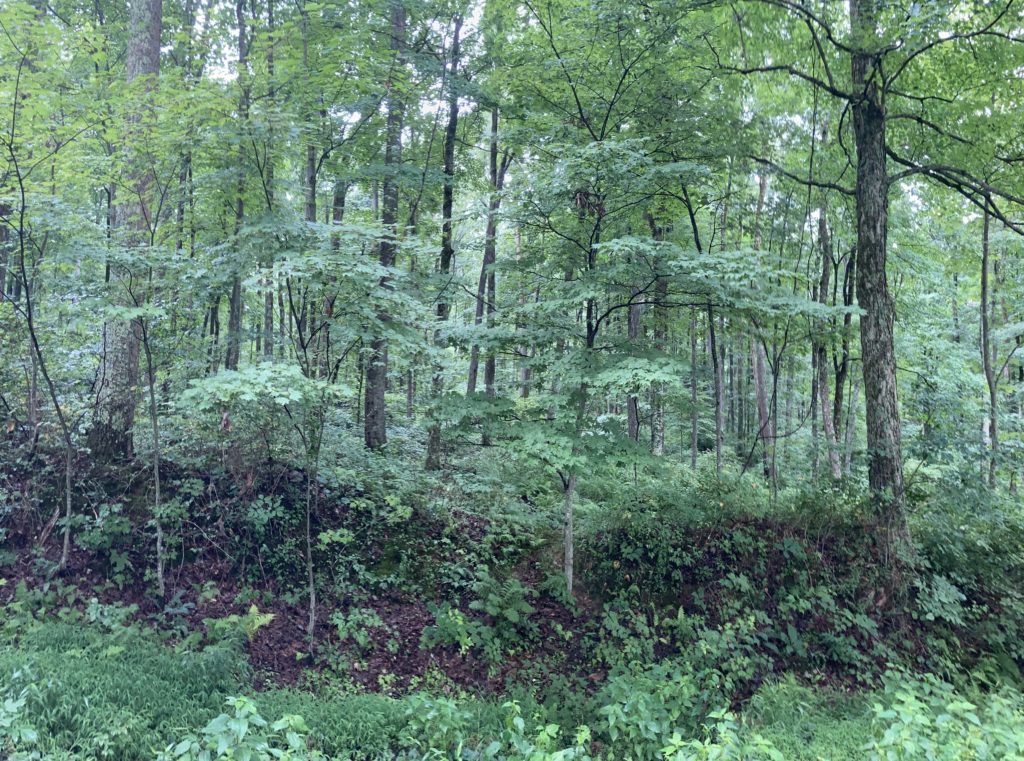Bird-Friendly Forestry in West Virginia
 Written by Dakota Wagner
Written by Dakota Wagner
The Southeast Region Office recently embarked on a new project in West Virginia focused on bird-friendly forestry. The primary objective of this project is to increase awareness, capacity, and acreage for bird-friendly forestry in Central Appalachia through strategic outreach and learning opportunities and the creation of demonstration sites. What is “bird-friendly” forestry, you ask? Bird-friendly forestry is managing forestland from the perspective of a bird and aims to improve wildlife habitat as well as overall forest health while improving timber stand conditions.
 This project’s demonstration sites will showcase management strategies to support habitat for three different bird species: the Wood Thrush, the Cerulean Warbler, and the Golden-winged Warbler. Both regeneration harvest practices and crop tree management practices will be used at appropriate sites to promote early-, mid-, and late-successional habitat characteristics. These sites will be located on land owned by The Forestland Group (TFG)– a timber management organization that happens to be the largest landholder in West Virginia. When we reached out to their Chief Forester and Guild member Alex Finkral about partnering on this project, we were met with enthusiasm. It is always exciting to partner with Guild members on project-based work! We are grateful for their willingness to partner with the Guild on this project as the demonstration sites will be pivotal in reaching our goals.
This project’s demonstration sites will showcase management strategies to support habitat for three different bird species: the Wood Thrush, the Cerulean Warbler, and the Golden-winged Warbler. Both regeneration harvest practices and crop tree management practices will be used at appropriate sites to promote early-, mid-, and late-successional habitat characteristics. These sites will be located on land owned by The Forestland Group (TFG)– a timber management organization that happens to be the largest landholder in West Virginia. When we reached out to their Chief Forester and Guild member Alex Finkral about partnering on this project, we were met with enthusiasm. It is always exciting to partner with Guild members on project-based work! We are grateful for their willingness to partner with the Guild on this project as the demonstration sites will be pivotal in reaching our goals.
 In July, Forest Stewards Guild staff joined TFG in rural West Virginia to scout potential forest tracts for demonstration site implementation. The day started overcast and cool – unusual for Appalachia in the height of summer. It was a perfect day to be in the woods. Touring the potential demonstration sites, we were looking at the forest from “a birds-eye view” and asking: what silviculture could be implemented here to support the needs of our target bird species while also meeting TFG’s timber management goals? We saw stands with oak, maple, and hickory and heard many different birds throughout the day. We even spotted several Scarlet Tanagers, a species that shares similar habitat needs as the Cerulean Warbler. When the day concluded we identified two primary tracts as potential demonstration sites and we celebrated with tacos and rooftop beers at a nearby local taco shop.
In July, Forest Stewards Guild staff joined TFG in rural West Virginia to scout potential forest tracts for demonstration site implementation. The day started overcast and cool – unusual for Appalachia in the height of summer. It was a perfect day to be in the woods. Touring the potential demonstration sites, we were looking at the forest from “a birds-eye view” and asking: what silviculture could be implemented here to support the needs of our target bird species while also meeting TFG’s timber management goals? We saw stands with oak, maple, and hickory and heard many different birds throughout the day. We even spotted several Scarlet Tanagers, a species that shares similar habitat needs as the Cerulean Warbler. When the day concluded we identified two primary tracts as potential demonstration sites and we celebrated with tacos and rooftop beers at a nearby local taco shop.
As we continue to work with TFG to lay out bird-friendly silvicultural prescriptions and set up the sites for harvest, other partners in the project are working diligently to capture the process. Wildlands Network in collaboration with Appalachian Mountains Joint Venture will be creating an ArcGIS StoryMap that tells the story of our target species that will be used in landowner and practitioner outreach and training.
This project has been made possible by funding from the National Fish and Wildlife Foundation as part of their Central Appalachian Habitat Stewardship Program.
